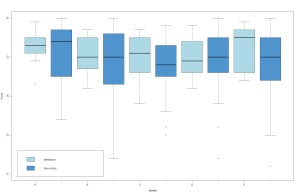Thirty students participated in the study, randomly assigned to either a teledidactic group or a face-to-face group. Despite randomization, the teledidactic group included more advanced students, with a higher proportion in their fourth and fifth years. The OSAUS final exam results were comparable between the two cohorts across all modules (p>0.05).

However, differences emerged in the assessment of images in the focused assessment with sonography for trauma (FAST) (p = 0.015) and aorta (p = 0.017) modules. Students in the teledidactic group performed higher than their face-to-face counterparts in both modules, scoring 33.59 (± 2.61) out of 44 in the FAST module (compared to 30.95 (± 1.76) in the face-to-face group), while aortic images averaged 35.41 (± 2.61) points versus 32.35 (± 3.08) points in the face-to-face group.